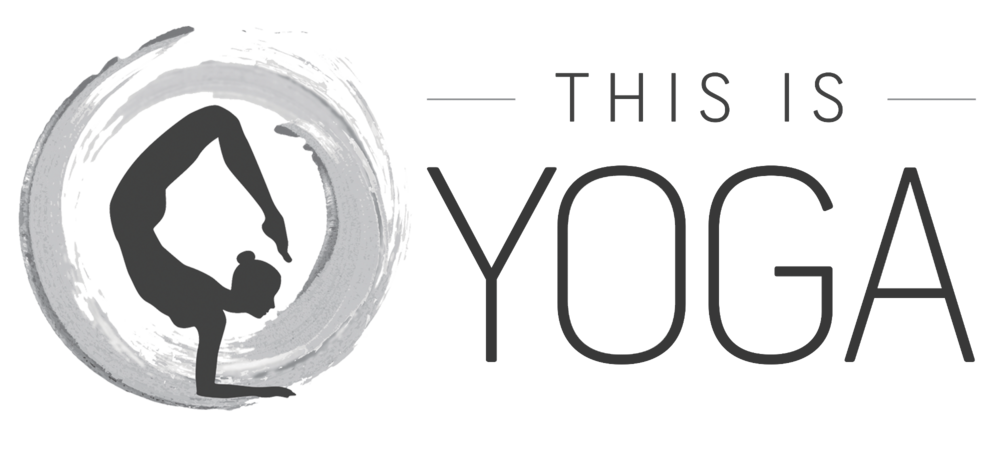In order to move forward, to work towards our goals and to build the life we want, we often have to first look inward. We need to be aware of our thoughts, our actions, and perhaps our inactions. Shying away from these this can be tempting, but can potentially hold us back. The article below discusses one of the yoga Niyamas - Svadhyaya, and how we can work this practice into our daily lives in order to work towards the life we want.
The word itself is made up of Sva, meaning own, self, or the human soul, and Adhyaya, meaning lesson, lecture, or reading, and can imply the practice of studying scriptures, as well as a practice of studying the Self.
‘self’ study and ‘Self’ study….
In many pieces of writing regarding the practice of yoga, when we see the word self written with a small ‘s’, it refers to ourselves in this physical form, our ego, and who we consider ourselves to be on a daily basis. When you read the word ‘Self’ with a capital ‘S’, this is likely to refer to the true self, Atman, or the divine within us.
Patanjali’s Yoga Sutra says: “Study thy self, discover the divine” II.44
It’s probably fair to say that the more we realise what we are not, the closer we come to realising who or what we truly are. By studying ‘the self’ and recognising our habits and thought processes, we realise how much of what we do and think is far from who we really know we are.
When we listen to the ego, we often do things that don’t always align with our true beliefs or intuition. The ‘I’ or small ‘self’ is mostly concerned with survival, which usually entails getting what it wants in all situations, and proving it is indeed ‘the best’ despite what consequences that might have for us. The small self judges, criticises, fears, conditions, doubts and is essentially the cause of the chitta vrittis, or ‘fluctuations of the mind’.
By paying attention to, or ‘studying’ our ‘self’, we become more aware of the things we do that harm us, and also those which serve us and bring us closer to that process of ‘yoking’ or ‘uniting’ with the true Self.
Studying the scriptures
There are thousands of yogic texts containing fascinating, inspiring and transformational writing about the practice of yoga in all its many forms. Some of the most popular and well-known texts which are still studied today include The Yoga Sutras of Patanjali, The Bhagavad Gita, and The Hatha Yoga Pradipika.
While it is advised that any sincere and dedicated student of yoga would benefit from reading, studying and reflecting upon these texts, not everyone who practises is going to be able to make time to delve into this ancient wisdom.
If we apply the practice of svadhyaha to our modern-day lives and the situations we’re in right now, ‘studying of the scriptures’ does not strictly have to mean sitting down with a huge copy of The Upanishads or chanting The Vedas; it might mean finding a book or a piece of writing that deepens your own yoga practice. Reading articles online about yoga, or a book which helps us move closer towards ‘Self-realisation’, is also a way of studying. By deepening our own knowledge, understanding and connection to yoga by continuing to read, research, be curious about yoga off the mat, we therefore cultivate our own practice of svadhyaya.
(It’s not enough to just read, though….)
While yes, reading about yoga and all its different aspects is beneficial, it doesn’t make very much difference unless we reflect upon it. When reading something about yogic practice, we can meditate upon how it resonates with us, whether it bears any resemblance to our own experiences, and therefore apply it to our own lives. Having a lot of books and information is one thing, but fully understanding and living what we learn allows our yoga practice to become more a part of our lives.
Svadhyaya on the mat
Studying our habits on the yoga mat can go a long way towards recognising our habits off the mat too. The way in which we practise yoga is actually very reflective of the way we practise life…. and a person’s physical yoga practice often reveals a lot more about them than they may think.
When we’re on the mat, there’s nowhere else to hide. The daily distractions of phones, chores, emails, and TV are no longer there to take our minds away from ourselves. We actually have to pay attention…. This can be a little intimidating at first, and a yoga practice can sometimes reveal more about where our problems are rather than how perfect we are – which as we know, is very good for destroying the ego.
Studying the breath is key
This is usually the first thing we learn when starting a yoga practice. The breath tells us how we are. A short, shallow breath held high up in the chest is often a signal that we’re stressed or worried about something, or that we’re physically pushing ourselves beyond healthy boundaries during the practice. If you notice your breath resembles this, first ask yourself why. Is there a reason to be stressed or worried? And does it matter right now?
Where do you hold tension?
The jaw, forehead, neck, shoulders and upper back are common places we tend to store our fears and worries. When you get to your mat, first become aware of what you can un-do before you begin to ‘do’ anything else. Ask yourself why this tension might be present, and how often does it arise during your practice?
What thoughts are filling your head?
If our time on the mat is the only time we give permission to ourselves to stop, it’s often also the time when our mind decides to unload its millions of whirling thoughts. If you notice your mind becomes especially busy when you come to practice, it’s not a case of ‘blocking out’ thoughts, rather it’s more useful to recognise and acknowledge them for what they are – as this will teach us a lot more about ourselves. Realising what thoughts enter our mind on a regular basis helps us become aware of many other aspects of ourselves.
Watch your thoughts, they become words; watch your words, they become actions; watch your actions, they become habits; watch your habits, they become character; watch your character, for it becomes your destiny. – Author Unknown
Svadhyaya in everyday life
As we’ve mentioned, reading anything which helps deepen your own yoga practice and move closer towards the Self can be a daily practice of svadhyaya – whether it’s ‘studying’ a traditional text, a blog, a book you really resonate with, or a poem.
Svadhyaya in the sense of studying our selves in daily life though, requires us to really take our yoga practice off the mat….
Knowing what we’re doing in each moment requires us to pay attention, but asking the question “why am I doing this?” requires us to be aware and fully present, which is ‘paying attention’ on a whole other level. Questioning our actions is something we may often avoid, as it is usually a catalyst for change, and as humans we don’t often like change….
Again, it comes down to recognising our habits, and discerning between the ones which come largely from an ego-based place, and which ones are the result of listening to our true Self.
The practice of taking a proverbial step back and observing and questioning our actions can eventually allow us to disentangle ourselves from those aspects of our lives that are harmful towards our wellbeing. As with anything worth doing, it isn’t easy, but it’s well worth the effort and dedication.
A Self-study practice
Observe yourself as though you were watching someone else; observe the way you speak to friends and family, the way you react when plans change, the way you hold yourself when walking or sitting, or even just the way in which you get dressed each morning… it all tells the story of who and how we are in this moment.
The practice of svadhyaya requires satya (honesty) in order to view ourselves from an honest standpoint, tapas (discipline) – because taking an honest look at ourselves isn’t always something we like doing…. And ahimsa (non violence) which reminds us to look upon ourselves without judgement or criticism.
“Yoga is the journey of the self, through the self, to the Self” – The Bhagavad Gita’
Article author: Emma Newlyn
Article source: https://www.ekhartyoga.com/articles/philosophy/the-niyamas-svadhyaya-or-self-study













